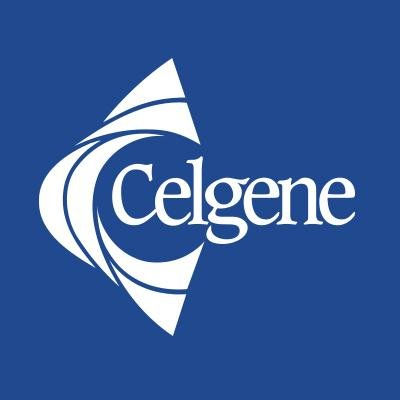预约演示
更新于:2025-05-07
IDH
更新于:2025-05-07
基本信息
别名- |
简介- |
关联
57
项与 IDH 相关的药物作用机制 IDH1抑制剂 [+1] |
原研机构 |
最高研发阶段批准上市 |
首次获批国家/地区 加拿大 |
首次获批日期2024-08-01 |
靶点 |
作用机制 IDH1抑制剂 |
在研适应症 |
最高研发阶段批准上市 |
首次获批国家/地区 美国 |
首次获批日期2022-12-01 |
靶点 |
作用机制 IDH1抑制剂 |
原研机构 |
非在研适应症 |
最高研发阶段批准上市 |
首次获批国家/地区 美国 |
首次获批日期2018-07-20 |
188
项与 IDH 相关的临床试验NCT06672146
A Randomized Phase II Trial of ASTX727 and Venetoclax Compared With ASTX727, Venetoclax, and Enasidenib for Newly Diagnosed Older Adults With IDH2 Mutant Acute Myeloid Leukemia: A MyeloMATCH Substudy
This phase II MyeloMATCH treatment trial studies how well ASTX727 and venetoclax plus enasidenib works compared to ASTX727 and venetoclax alone for the treatment of older patients with newly diagnosed acute myeloid leukemia (AML) or younger patients who are considered unfit for standard treatment, and who have an abnormal change (mutation) in the IDH2 gene. This gene mutation can cause AML to grow and spread. This trial is being done to see if adding enasidenib to the usual treatment can help more patients with the IDH2 gene get rid of AML. Cedazuridine is in a class of medications called cytidine deaminase inhibitors. It prevents the breakdown of decitabine, making it more available in the body so that decitabine will have a greater effect. Decitabine is in a class of medications called hypomethylation agents. It works by helping the bone marrow produce normal blood cells and by killing abnormal cells in the bone marrow. Venetoclax is in a class of medications called B-cell lymphoma-2 (BCL-2) inhibitors. It may stop the growth of cancer cells by blocking Bcl-2, a protein needed for cancer cell survival. Enasidenib works by stopping the growth and spread of tumor cells that have the IDH2 mutation. Giving ASTX727 and venetoclax plus enasidenib may work better in treating AML patients with the IDH2 mutation.
开始日期2025-12-27 |
申办/合作机构 |
NCT06577441
A Randomized Phase II Trial of Enasidenib-Based Therapies Versus Cedazuridine-Decitabine in Higher-Risk IDH2-Mutated Myelodysplastic Syndrome: A MyeloMATCH Treatment Trial
This phase II MyeloMATCH treatment trial compares the usual treatment of cedazuridine-decitabine (ASTX727) to the combination treatment of ASTX727 and enasidenib in treating patients with higher-risk, IDH2-mutated myelodysplastic syndrome (MDS). ASTX727 is a combination of two drugs, decitabine and cedazuridine. Cedazuridine is in a class of medications called cytidine deaminase inhibitors. It prevents the breakdown of decitabine, making it more available in the body so that decitabine will have a greater effect. Decitabine is in a class of medications called hypomethylation agents. It works by helping the bone marrow produce normal blood cells and by killing abnormal cells in the bone marrow. Enasidenib is an enzyme inhibitor that may stop the growth of cells by blocking some of the enzymes needed for cell growth. Giving ASTX727 in combination with enasidenib may be effective in treating patients with higher-risk IDH2-mutated MDS.
开始日期2025-12-27 |
申办/合作机构 |
NCT06809322
Vorasidenib as Maintenance Treatment After First-line Chemoradiotherapy in IDH-mutant Grade 2 or 3 Astrocytoma: a Placebo-controlled, Triple-blind, Randomized Phase III Study (VIGOR)
The main goal of VIGOR is to demonstrate that vorasidenib maintenance therapy improves locally assessed progression-free survival (PFS) from enrolment compared to placebo in patients with IDH-mutant, CNS5 WHO Grade 2 or 3 astrocytoma following the completion of first-line chemoradiotherapy.
The primary endpoint is Progression-free survival (PFS), as assessed locally from the date of enrolment using the RANO 2.0 criteria.
In this a comparative, randomized (1:1), triple blinded, multicentre phase III superiority trial with one stopping rule for efficacy and futility after end of enrolment, participants in the experimental arm will receive vorasidenib orally once daily at a dose of 40 mg in continuous 28-day cycles while participants in the control arm will receive a matched oral placebo once daily in continuous 28-day cycles
The primary endpoint is Progression-free survival (PFS), as assessed locally from the date of enrolment using the RANO 2.0 criteria.
In this a comparative, randomized (1:1), triple blinded, multicentre phase III superiority trial with one stopping rule for efficacy and futility after end of enrolment, participants in the experimental arm will receive vorasidenib orally once daily at a dose of 40 mg in continuous 28-day cycles while participants in the control arm will receive a matched oral placebo once daily in continuous 28-day cycles
开始日期2025-12-05 |
申办/合作机构  Eortc Eortc [+1] |
100 项与 IDH 相关的临床结果
登录后查看更多信息
100 项与 IDH 相关的转化医学
登录后查看更多信息
0 项与 IDH 相关的专利(医药)
登录后查看更多信息
9,108
项与 IDH 相关的文献(医药)2025-08-01·Water Research
Genome-resolved metagenomic analysis reveals a novel denitrifier with truncated nitrite reduction pathway from the genus SC-I-84
Article
作者: Lin, Yanting ; Meng, Fangang ; Chen, Qianqian ; Li, Jiapeng ; Zuo, Xiaotian
2025-07-01·Water Research
Antibiotics shape the core microbial community distribution between floc and biofilm in an endogenous partial denitrification system: Insight from metabolic pathway
Article
作者: Yao, Wei ; Pang, Jin-Luo ; Dong, Kai-Yue ; Chang, Rong-Rong ; Huang, Bao-Cheng ; Jin, Ren-Cun ; Chen, Ke-Yu ; Yang, Chao-Xi
2025-07-01·Theriogenology
SIRT5 alleviates oxidative stress of boar sperm induced by cryopreservation through IDH2 and SOD2 pathway
Article
作者: Ali, Malik Ahsan ; Huang, An-Qi ; Dou, Shan ; Ni, Qingyong ; Tang, Yiguo ; Xu, Xinhong ; Zhang, Yan ; Zeng, Changjun
583
项与 IDH 相关的新闻(医药)2025-05-01
·小药说药
-01-引言肿瘤是一个复杂的生态系统,其中癌症细胞和多种宿主细胞之间的相互作用影响疾病的进展和治疗反应。在肿瘤进展过程中,癌症细胞采用多种途径来逃避免疫攻击,例如下调抗原提呈机制或诱导抑制性免疫检查点分子,而免疫压力在肿瘤的发展和转移扩散过程中促进克隆进化。同时,癌症细胞劫持免疫细胞,如中性粒细胞、巨噬细胞和调节性T细胞(Treg),以协调免疫抑制性肿瘤微环境(TME)。这反过来促进免疫逃逸,促进血管和细胞外基质的重塑,并支持癌症进展和治疗抵抗。异常免疫反应被广泛认为是癌症的标志,并为癌症治疗提供了有吸引力的靶点。因此,我们有必要深入了解癌症细胞的内在特征,包括遗传变异、信号通路调节和代谢改变,它们在协调免疫景观的组成和功能状态方面发挥关键作用,并影响免疫调节策略的治疗效益。-02-一、遗传改变癌基因、抑癌基因或DNA损伤修复基因中的特定癌症细胞固有遗传改变有助于调节癌症免疫状况。癌基因癌症细胞中不同的致癌基因通过不同的机制调节免疫行为,这些机制因癌症类型、癌症分期和癌症部位而异。例如,KRAS突变通过IL-8诱导的炎症、IL-6介导的巨噬细胞和Treg细胞浸润、GM-CSF诱导的Gr1+CD11b+髓系细胞的扩增、IL-10和TGF-β介导的CD4+CD25−T细胞向Treg细胞的转化、以及抑制干扰素调节因子2(IRF2)和随后产生的CXCL3,从而导致CD8+T细胞抑制,髓系衍生抑制细胞(MDSCs)的迁移增强。MYC通过增强CD47和PD-L1表达来抑制抗肿瘤免疫,从而削弱巨噬细胞和T细胞的募集。此外通过分泌IL-1β,阻断细胞毒性T细胞、NK细胞和树突状细胞的浸润,并增强支持肿瘤的巨噬细胞和中性粒细胞的浸润。KRAS突变和MYC还通过与MYC相互作用的锌指蛋白1(MIZ1)产生协同作用,介导IFN-β的抑制以及CCL9和IL-23的分泌,增强PD-L1+巨噬细胞浸润,抑制B细胞、T细胞和NK淋巴细胞驱动免疫逃避。此外,突变的表皮生长因子受体(EGFR)通过降低PD-L1表达来驱动免疫逃逸,通过IRF1介导的CXCL10下调阻碍CD8+T细胞募集,并通过CD73依赖性腺苷生成或JNK–JUN介导的CCL2上调促进Treg细胞浸润。人表皮生长因子受体2(HER2)扩增导致主要组织相容性复合物I类(MHC-I)的下调和TANK结合激酶1(TBK1)的磷酸化,其抑制下游cGAS–STING信号传导和IFNβ产生,导致免疫逃避。抑癌基因抑癌基因通过不同的环境依赖机制调节免疫。例如,研究发现Trp53的缺失通过WNT配体介导的巨噬细胞极化和IL-1β的产生驱动免疫抑制,导致中性粒细胞的全身聚集,从而CD8+T细胞的抑制和CXCL17、CCL3、CCL11、CXCL5和M-CSF介导的巨噬细胞和Treg细胞的募集。TP53的突变与PD-L1表达相关,并通过CXCL2分泌调节免疫抑制中性粒细胞的募集,通过NF-κB介导的IL-8调节慢性炎症,并且结合TBK1抑制下游cGAS–STING–IRF3信号传导和IFN-β1的产生,其减少T细胞和NK细胞浸润并增强巨噬细胞极化。相反,TP53的功能增益突变与新抗原表达,以及IFN-γ和CXCL9表达相关,这支持抗肿瘤免疫。在KRAS突变肿瘤中,丝氨酸/苏氨酸激酶11(STK11)的失活通过粒细胞集落刺激因子(G-CSF)、IL-6和CXCL7的表达刺激免疫抑制中性粒细胞的积聚。此外,KRAS和STK11突变肿瘤中PD-L1的表达会导致对免疫检查点阻断(ICB)的抵抗。最后,PTEN丢失通过CCL2和VEGF的分泌减少CD8+T细胞浸润,并激活PI3K信号增强PD-L1的表达,以及NF-κB介导的CCL20、CXCL1、IL-6和IL-23分泌增强Treg细胞和髓系细胞浸润,并通过IL-1β和M-CSF驱动局部MDSC扩增。DNA损伤修复机制的遗传改变癌症细胞中的错配修复(MMR)缺陷会导致突变、新抗原和细胞中DNA的积累,从而触发cGAS–STING依赖性的T细胞浸润,免疫检查点分子如PD-1、PDL1、CTLA-4和LAG-3在浸润免疫细胞上的表达增强。在BRCA1突变的肿瘤中,双链DNA积聚在细胞中,并引发与CD8+T细胞浸润相关的cGAS–STING介导的炎症反应。cGAS–STING还促进免疫抑制性髓系细胞、巨噬细胞、Treg细胞和耗竭的PD1+T细胞的募集,以及VEGF的上调。DNA传感基因和下游介质(如IFN-β或CCL5)的遗传缺失或表观遗传沉默可介导BRCA1突变肿瘤的免疫逃逸,以及PD-L1的表达增强。相反,BRCA2突变肿瘤显示cGAS–STING介导的各种T细胞群的富集。-03- 二、表观遗传修饰除了遗传改变外,表观遗传改变也是癌症细胞的一个共同特征,在核结构和基因转录中起着至关重要的作用。癌症表观基因组会发生各种变化,包括DNA甲基化、组蛋白修饰、染色质重塑和非编码RNA的失调。越来越多的证据表明,癌症细胞中发生的表观遗传变化也会影响与免疫系统的串扰。DNA甲基化由于超级增强子(SE)的形成,炎症基因的DNA去甲基化导致CXC趋化因子配体(CXCL)介导的中性粒细胞募集,而总体低甲基化与PD-L1、IL-6和VEGF的表达增强相关。而DNA(超)甲基化可降低编码PD-L1的基因CD274和编码MHC-I的HLA基因的表达,而编码cGAS–STING的基因通过启动子甲基化的转录抑制增强MHC-I表达和T细胞识别。异柠檬酸脱氢酶1(IDH1)或IDH2的突变通过将α-酮戊二酸转化为(R)-2-羟基戊二酸(2HG)来诱导全局超甲基化。而编码PD-L1、CXCL9和CXCL10免疫相关基因的转录抑制会损害IDH突变肿瘤中CD8+T细胞的浸润,G-CSF的转录激活会增强非抑制性中性粒细胞和前中性粒细胞的浸润。组蛋白甲基化组蛋白H3在Lys27发生三甲基化(H3K27me3),在DNA低甲基化的背景下,抑制编码MHC-I、CXCL9和CXCL10的基因,并减少CD8+T细胞浸润。癌症细胞中的多梳抑制复合物2(PRC2)活性介导H3K27me3,抑制G-CSF和IL-6的表达并诱导性一氧化氮合成酶阳性(iNOS+)巨噬细胞、中性粒细胞和T细胞的招募。ARID1A是SWI/SNF复合物的DNA结合亚基, ARID1A的遗传突变会抑制IFN-γ诱导基因转录和CXCL9、CXCL10和CXCL11的表达,从而抑制T细胞浸润。组蛋白乙酰化组蛋白乙酰化通过组蛋白乙酰转移酶1(HAT1)调节免疫应答,HAT1介导CD274和组蛋白去乙酰化酶(HDACs)的表达,HDACs抑制编码PD-L1和PD-L2的基因的表达,以及CCL5、CXCL9和CXCL10的表达,从而损害T细胞浸润。-04-三、细胞内信号通路癌症细胞的一个关键特征是异常信号传导,这是由编码或非编码DNA区域的遗传或表观遗传改变以及生长因子和代谢等外部信号驱动的。WNT–β-catenin通路激活的癌症细胞内固有WNT–β-catenin信号与免疫排斥相关,但其潜在机制仍不明确。WNT–β-catenin通过诱导ATF3表达阻断CD103+树突状细胞的募集和T细胞启动,并抑制CCL4或CCL5分泌。TGF-β通路淋巴细胞抗原LY6K和LY6E在癌症细胞中的过表达激活TGF-β信号转导和SMAD2/3磷酸化,导致NK细胞活性降低和Treg细胞浸润增强。αVβ6整合素的上调通过激活TGF-β和SMAD2/3磷酸化来调节SOX4的表达,SOX4抑制多种I型干扰素诱导基因和编码MHC-I的基因,同时增强PD-L1表达,这会损害细胞毒性T细胞介导的免疫。此外,癌症细胞衍生的TGF-β介导CD4+T细胞向Treg细胞的转化。而SMAD4的敲除会导致肿瘤细胞中TGF-β信号的失活,这增强了CCL9的表达和未成熟髓系细胞的募集。NF-κB信号通路PD-L1的表达受癌症细胞内NF-κB信号转导的转录调控,其途径是通过MUC1-c与CD274启动子上的NF-κB亚基p65的直接结合,或通过TGF-β介导的MRTFA的表达。MUC1-C和p65还驱动ZEB1转录,这导致编码CCL2、IFN-γ、GM-CSF和TLR9的基因受到抑制,CD8+T细胞浸润受损。相反,免疫疗法和化疗诱导的NF-κB和p300–CBP的活化增强了MHC-I抗原呈递和CD8+T细胞识别。HIF信号通路缺氧诱导的缺氧诱导因子1α(HIF1α)信号通路通过增强CD274的表达和抑制编码CCL2和CCL5的基因来驱动免疫逃避,这会损害NK细胞和CD8+T细胞的浸润,而HIF2α诱导CXCL1的表达并促进肿瘤的中性粒细胞募集。-05-四、代谢改变在肿瘤的发生和进展过程中,癌症细胞及其TME不断暴露在恶劣的条件和压力下。为了生存和维持生长,需要细胞适应和代谢重编程。癌症代谢重编程与免疫抑制和逃避有关。肿瘤细胞消耗大量葡萄糖,这与T细胞浸润不良有关。高葡萄糖消耗导致乳酸的产生并分泌到肿瘤微环境中,乳酸在肿瘤微环境中以免疫抑制的方式起作用,降低NK细胞的细胞溶解活性,并增强PD-1表达和Treg细胞的免疫抑制能力。此外,乳酸增加了肿瘤和脾脏中MDSC的频率,并在肿瘤相关巨噬细胞中诱导“M2样”极化。此外,癌症细胞中谷氨酰胺的消耗降低CD8+T细胞的活化和浸润,并通过增加G-CSF的分泌增强MDSC的募集。-06-结语近年来,关于癌症细胞-免疫细胞串扰的研究大幅增长。跨越式发展的技术进步,包括单细胞多组学技术,基于人工智能的系统生物学方法以及体内体细胞基因编辑策略,有望加速这些研究的深入,并最终形成针对个体患者的新型免疫干预策略。展望未来,个性化免疫干预策略将需要综合多组学肿瘤表征、免疫分析、液体活检样本的动态监测以评估基于血液的生物标志物、计算数据分析和转化,以及临床相关体外和体内模型的机制研究。有关癌症细胞内在和癌症细胞外部特征的知识体系将共同决定局部和系统免疫状况,以指导临床决策,并为针对患者个性化新型治疗方法开辟道路。参考资料:1.Mechanisms driving the immunoregulatory function of cancer cells. Nat Rev Cancer.2023 Jan 30.公众号内回复“ADC”或扫描下方图片中的二维码免费下载《抗体偶联药物:从基础到临床》的PDF格式电子书!公众号已建立“小药说药专业交流群”微信行业交流群以及读者交流群,扫描下方小编二维码加入,入行业群请主动告知姓名、工作单位和职务。
免疫疗法AACR会议临床1期
2025-04-30
点击蓝字关注我们编者按:2025年4月18日-19日,由中国临床肿瘤学会(CSCO)和北京市希思科临床肿瘤学研究基金会联合主办的2025 CSCO指南会在济南山东大厦隆重召开。在本次大会上,北京大学人民医院许兰平教授,针对2025 CSCO造血干细胞移植治疗血液系统疾病指南的更新内容进行了深入解读。《肿瘤瞭望-血液时讯》特整理课件精粹,以飨读者。异基因造血干细胞移植(allo-HSCT)是治疗白血病、骨髓增生异常综合征(MDS)、多发性骨髓瘤(MM)、非霍奇金淋巴瘤(NHL)及重型再生障碍性贫血(SAA)等疾病的重要根治手段。随着单倍型移植“北京方案”的建立并在全国范围内推广,allo-HSCT进入“人人皆有供者”的新时代,推动我国移植病例数量持续快速增长。2025版指南立足中国本土的临床实践与科研成果,秉持与时俱进的前瞻视角,从多个方面进行了更新,充分体现持续优化与规范化的发展方向。异基因造血干细胞移植01适应证及时机在异基因造血干细胞移植治疗急性髓系白血病、急性淋巴细胞白血病、慢性髓系白血病、骨髓增生异常综合征、其他B细胞淋巴瘤、T细胞淋巴瘤的适应证中均删去了“≤65岁”的限制。新增“异基因造血干细胞移植治疗地中海贫血的适应证”,具体见下表。02患者及供者评估在患者评估中新增“地中海贫血内容”。03预处理方案在标准清髓性(MAC)预处理中删除了AA部分。新增“地中海贫血移植预处理内容”,见下表。04急性移植物抗宿主病(aGVHD)在aGVHD一线治疗的Ⅱ级推荐中,增加“也可考虑甲泼尼龙1 mg/(kg·d)联合低剂量MTX或低剂量芦可替尼(1B类)”。05慢性移植物抗宿主病(cGVHD)在cGVHD预防的Ⅱ级推荐中,删去了“ATG+PT/CY(2B类)”。在cGVHD的诊断中,新增“眼部GVHD诊断内容”,见下表。在cGVHD一线治疗的Ⅱ级推荐中,删去了“泼尼松+奥法妥木单抗(2B类)”和“泼尼松+伊布替尼(ibrutinib)(2B类)”。在cGVHD二线治疗的Ⅰ级推荐中增加“甲磺酸贝舒地尔(2A类)”,Ⅱ级推荐中增加“西罗莫司(2A类)”和“艾克利单抗(2A类)”,Ⅲ级推荐中增加“本外光分高置换术(ECP)(2C类)”,见下表。新增“cGVHD的患者报告结局评估内容”,见下表。06真菌感染防治在治疗药物的I级推荐中增加“艾沙康唑”,见下表。07病毒感染防治在HBV再激活/感染防治中,增加“干扰素治疗”的Ⅲ级推荐,见下表。08复发防治针对ALL移植后复发的预防,在预处理方案调整的Ⅲ级推荐中,增加“西达本胺联合BUCY预处理方案改善T-ALL/LBL的移植后生存(2B类)”;在靶向药物治疗中,将“Ph-ALL:移植前MRD阳性用贝林妥欧单抗桥接”由Ⅲ级(2B类)推荐调整为Ⅱ级(2A类)推荐,并在Ⅲ级推荐中增加“②移植前CAR-T桥接(MRD阳性)”,见下表。针对MDS移植后复发的预防,在预处理方案中,新增“地西他滨与其他药物(如去甲氧柔红霉素)联合使用可有效降低高危MDS患者移植后的复发率(2A类)”的Ⅱ级推荐,见下表。针对AML移植后复发的抢先治疗,在靶向药物的Ⅲ级推荐中新增“阿伐替尼(3类)”和“去甲基化药物(3类)”;在细胞免疫治疗的I级推荐中新增“改良DLI(2A类)”,见下表。针对ALL移植后复发的抢先治疗,在免疫治疗的Ⅱ级推荐中新增“贝林妥欧单抗(2A类)”,见下表。针对AML移植后复发的治疗,在免疫治疗的Ⅲ级推荐中新增“GO单抗(2A)”;在靶向治疗的Ⅱ级推荐中细化或新增“1.针对FLT3抑制剂吉瑞替尼(1类)和针对FLT3-ITD患者选择索拉非尼联合HMA(2A类);2.IDH1抑制剂艾伏尼布、奥鲁替尼(2A类);3.IDH2抑制剂恩西地平(2A类)”;Ⅲ级推荐中新增“2.其他如menin抑制剂(针对KMT2Ar或NPM1突变)(3类)”,见下表。09随访在移植后随访中新增“地中海贫血内容”,见下表。自体造血干细胞移植01适应证针对多发性骨髓瘤自体造血干细胞移植的适应证,将肾功能评估I级推荐中的“血30ml/min≤Cr<60ml/min且尿量正常时,预处理剂量减量(马法兰剂量减为140mg/M2)”和“血Cr<30ml/min,权衡移植利弊”分别调整为Ⅱ级、Ⅲ级推荐,见下表。专家简介许兰平 教授北京大学人民医院国家血液系统疾病临床医学研究中心北京大学人民医院血液科副主任、主任医师、博导海峡两岸医药卫生交流协会第三届、第四届理事会常务理事,第二届、第三届血液学专委会主任委员中华骨髓库北京分库第三届专家委员会主任委员中国研究型医院学会细胞研究与治疗专委会常务委员中国医疗保健国际交流促进会临床微生物与感染分会委员中国造血干细胞捐献者资料库第八届、第九届专家委员会委员《白血病.淋巴瘤》《中华老年多器官杂志》《中华血液学杂志》杂志编委2014、2017位两次列国家科学技术进步奖二等奖获奖者名单主要研究方向:造血干细胞移植治疗骨髓衰竭性疾病的研究责任作者或第一作者发表SCI文章50余篇,共同作者参与发表文章500余篇,参与编写教材或论著十余次(来源:《肿瘤瞭望–血液时讯》编辑部)声 明凡署名原创的文章版权属《肿瘤瞭望》所有,欢迎分享、转载。本文仅供医疗卫生专业人士了解最新医药资讯参考使用,不代表本平台观点。该等信息不能以任何方式取代专业的医疗指导,也不应被视为诊疗建议,如果该信息被用于资讯以外的目的,本站及作者不承担相关责任。
CSCO会议临床1期
2025-04-25
点击蓝字关注我们编者按:2025年4月18日-19日,由中国临床肿瘤学会(CSCO)和北京市希思科临床肿瘤学研究基金会联合主办的2025 CSCO指南会在济南山东大厦隆重召开。在本次大会上,上海交通大学附属第六人民医院常春康教授,围绕2025 CSCO恶性血液病指南中关于骨髓增生异常综合征(MDS)和骨髓增殖性肿瘤(MPN)[包括真性红细胞增多症(PV)、原发性血小板增多症(ET)和原发性骨髓纤维化(PMF)]部分的更新内容进行了精彩解读。《肿瘤瞭望-血液时讯》特整理课件内容,以飨读者。骨髓增生异常综合征(MDS)01治疗前评估MDS中染色体异常及其比例a注释更新:a.WHO和ICC都建议形态学未达到发育不良标准,只伴有以上细胞遗传学异常不能作为诊断MDS的确切证据,如果同时伴有持续性血细胞减少,只能考虑拟诊MDS,处理方式与CHIP的突变相同。b.IPSS和IPSS-R分组依赖于细胞遗传学结果,如果不能检测常规核型分析或无可供分析的中期分裂相,最低推荐FISH探针需包括的组合。02惰性髓系造血疾病谱MDS诊断的确立需要鉴别和除外下列因不满足MDS最低诊断标准而衍生的包括意义未明的特发性血细胞减少(ICUS)、意义未明的特发性发育异常(IDUS)、潜质未定的克隆性造血(CHIP)及意义不明的克隆性细胞减少症(CCUS)在内的可能发展为MDS的前驱疾病惰性髓系造血疾病。注释新增:d.因WHO(2022)第五版中将WHO(2016)分类定义的具有MDS定义的细胞遗传学无细胞发育不良异常MDS-U患者的归类为CCUS,但除外其中del(5q)、多重打击TP53突变或-7/del(7q)或复杂核型缺乏发育异常或过量原始细胞的病例被分类为MDS-5q、MDS-BiTP53。故目前的CCUS克隆性特征,要么存在既往的髓系相关体细胞突变(存在于>2%的变异等位基因频率[VAF]),要么具有上述克隆核型异常(存在于≥2个中期分裂相)。03治疗基于PACE、MEDALIST、COMMANDS和MDS-004四项关键研究,罗特西普在治疗低危MDS(LR-MDS)方面实现突破,从二线治疗提升至一线起始治疗。基于艾伏尼布治疗IDH1突变复发/难治性MDS患者的1期子研究结果,艾伏尼布被纳入新版指南推荐。k 维奈克拉是否加入基于患者的状态和耐受性。注释更新:(5) 伊美司他:一种用于静脉注射的13个碱基的寡核苷酸端粒酶抑制剂,起始剂量 7.1mg/kg 静脉注射,上市研究IMerge研究中可能频繁发生短暂性血小板减少和中性粒细胞减少,因此可能导致剂量减少。起始血小板和中性粒细胞水平应为≥75×109/L和≥1.5×109/L。2024年6月6日美国食品药品监督管理局(FDA)批准上市,目前国内尚未上市。(9)小分子靶向药物:一些新数据显示了维奈克拉和IDH1/2抑制剂对患有HMA难治性疾病的高危MDS患者的疗效。目前维奈克拉与阿扎胞苷联合治疗MDS的Ⅲ期临床研究(Verona)披露的数据,维奈克拉推荐用法为 400 mg×14 d,口服,28天为 1 个疗程,但最佳剂量及疗程基于患者的状态和耐受性。2023年10月24日美国食品药品监督管理局(FDA)批准艾伏尼布(ivosidenib)每日500 mg口服,28天为一周期,用于治疗复发/难治MDS,目前国内尚未获批MDS适应症。真性红细胞增多症(PV)01治疗前评估(PV、ET、PMF通用)在病史采集和体格检查中,除评估有无血栓病史,有无出血史外,还新增:年龄、有无心血管危险因素(如高血压、高血脂、糖尿病、吸烟和充血性心力衰竭),家族中有无类似患者,有无长期高原生活史,有无呼吸系统和心血管系统疾病导致的慢性缺氧病史,脾脏触诊。在症状评分中,将MPN-10统一修改为MPN-SAF TSS。在实验室检查中,删除了血清免疫固定电泳、动(静)脉血气、呼吸睡眠检测。分子学检查从(外周血)改为(骨髓或者外周血均可)。在骨髓检查中,将免疫分型调整为I级推荐。02诊断标准(参考ICC2022)真红后骨髓纤维化的英文缩写由PPV-MF更换为Post-PV-MF。进行性脾大定义为此前有脾大者超过基线5 cm或新出现脾大。注释更新:“如果血红蛋白>185 g/L(男性),>165 g/L(女性)或者HCT>55.5%(男性),>49.5%(女性),且标准③和次要标准都满足,则不一定需要满足标准②。”改为“对于持续红细胞增多,血红蛋白>185 g/L(男性),>165 g/L(女性)或者HCT>55.5%(男性),>49.5%(女性),同时有JAK2 V617F或者JAK2 exon 12突变,可能不需要行骨髓活检。”03治疗低危、高危患者在治疗I级推荐中均加入了控制心血管危险因素(CVR)。在低危患者中,罗培干扰素α-2b由Ⅰ级推荐改为II级推荐。在高危患者的I级推荐中,新增临床试验和羟基脲。注释更新:“小剂量阿司匹林40~100 mg/d”改为“小剂量阿司匹林80~100 mg/d”。增加PV患者羟基脲耐药或者不耐受的定义。原发性血小板增多症(ET)01诊断标准(参考ICC2022)ET后骨髓纤维化的英文缩写由PET-MF 更换为Post-ET-MF。注释新增:c. 建议使用高敏感性检测方法检测JAK2 V617F(敏感性水平<1%)、CALR和MPL(敏感性水平1%至3%);在阴性病例中,考虑寻找非典型的JAK2和MPL突变。d. 通过细胞遗传学或敏感的NGS技术进行评估。e. 血小板增多的反应性原因包括各种潜在的疾病,如缺铁、慢性感染、慢性炎症性疾病、药物治疗、肿瘤或脾切除术史。02治疗新增“阿那格雷”为降细胞治疗的I级推荐。新增“血小板分离(紧急情况如严重的血小板增多相关神经并发症)”。注释更新:删除“阿那格雷可以良好控制血小板数目,但是患者总生存和无纤维化时间有可能缩短,因此,应该慎用阿那格雷”。增加“羟基脲/干扰素a/阿那格雷耐药、不能耐受者可以考虑之前没有用过的药物互换或者芦可替尼,也可以酌情联合使用上述药物。”原发性骨髓纤维化(PMF)01治疗在二线及进展期治疗的Ⅲ级专家推荐中,新增“短期停药后重启芦可替尼”。参考文献:1.Platzbecker U, et al. Lancet Oncol. 2017; 18:1338-13472.Fenaux P, et al. N Engl J Med. 2020; 382(2):140-513.Zhijian Xiao, et al. 2024 EHA. 06/13/2024; 419985; P18984.Della Porta MG, et al. Lancet Haematol. 2024;11(9):e646-e658.5.Blood Adv. 2024 Aug 13;8(15):4209-4220.6.Manero G. Lancet. 2023 , 402(10399):373-385. 7.Platzbecker U, Santini V, Fenaux P, et al. Lancet. 2024 Jan 20;403(10423):249-260.专家简介常春康 教授上海交通大学附属第六人民医院主任医师,博士生导师上海市第六人民医院血液科主任,上海血研所副所长中国老年血液学会副会长MDS专委会主任委员中国血液医师协会委员中华医学会血液学会红细胞学组委员医促会血液学会委员中国抗癌协会(CACA)MDS/MPN学组副组长CSCO中国抗白血病联盟委员中国免疫血液学会委员中国罕见血液病工作组委员上海血液学会副主任委员红细胞学组组长CACA上海抗癌协会理事上海血液肿瘤副主任委员上海市医学领军人才中华血液杂志编委中国实验血液学杂志编委在国内外核心期刊发表论文300余篇,其中包括Nature communication、Blood、Pnas、Hematologica、BJH等SCI论文100余篇(来源:《肿瘤瞭望–血液时讯》编辑部)声 明凡署名原创的文章版权属《肿瘤瞭望》所有,欢迎分享、转载。本文仅供医疗卫生专业人士了解最新医药资讯参考使用,不代表本平台观点。该等信息不能以任何方式取代专业的医疗指导,也不应被视为诊疗建议,如果该信息被用于资讯以外的目的,本站及作者不承担相关责任。
CSCO会议临床1期
分析
对领域进行一次全面的分析。
登录
或

生物医药百科问答
全新生物医药AI Agent 覆盖科研全链路,让突破性发现快人一步
立即开始免费试用!
智慧芽新药情报库是智慧芽专为生命科学人士构建的基于AI的创新药情报平台,助您全方位提升您的研发与决策效率。
立即开始数据试用!
智慧芽新药库数据也通过智慧芽数据服务平台,以API或者数据包形式对外开放,助您更加充分利用智慧芽新药情报信息。
生物序列数据库
生物药研发创新
免费使用
化学结构数据库
小分子化药研发创新
免费使用


